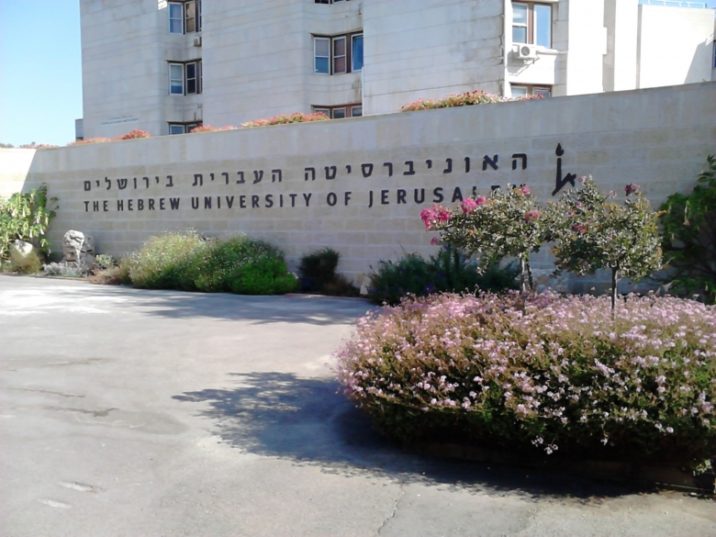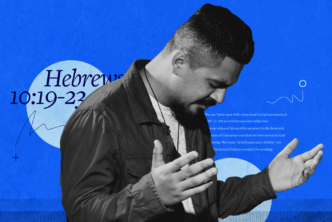With a total of 14 talks from scholars throughout Israel and Canada, and over 60 people in attendance, this year’s Workshop on Biblical Hebrew Linguistics and Philology at the Hebrew University (HU) in Jerusalem was an all-around success.
Cutting-edge linguistics and in-depth philological studies helped to shed light on Biblical Hebrew grammar in novel ways. Conveners Edit Doron and Robert Holmstedt gathered some of the best scholars in the field for this year’s workshop. Below are short summaries of each of the talks; the full handouts/presentations can be found at the conference’s website here.
Introduction
After introductions by Amalya Oliver (a sponsor at HU) and Moshe Bar-Asher (the president of the Hebrew Language Academy), Robert Holmstedt kicked off the conference with a short talk on the relationship between linguistics and philology and some of the struggles in “bridging the gap.”

Session 1, Talk 1 – Ordinals in Biblical Hebrew by Adina Moshavi and Susan Rothstein
The first talk was a great example of how linguists and philologists can work together and contribute to each other’s work. Adina Moshavi and Susan Rothstein teamed up to discuss how speakers of Biblical Hebrew (BH) measured and counted, and some interesting parallels were drawn to other categories such as superlatives and diachrony.

Session 1, Talk 2 – Hybrid Syntactic Constructions in Biblical Hebrew by Tamar Zewi
Tamar Zewi followed up on Moshavi and Rothstein’s presentation by discussing some difficult syntactic constructions that seem to be “hybrids,” such as subjects introduced by תא. It was a great opportunity to look at some of the more neglected syntactic phenomena.

Session 2, Talk 1 – A Unified Account of the Infinitive Absolute in Biblical Hebrew by Elizabeth Cowper and Vincent DeCaen
In the first of two talks on the infinitive in BH, Cowper and DeCaen teamed up to discuss the syntax of the infinitive absolute. They stressed the “verbal” nature of the infinitive and tried to account for some of the less well-known uses of the infinitive absolute, such as when the root of the infinitive is different than the root of the main verb. They offered much to think about.

Session 2, Talk 2 – The Biblical Hebrew Infinitive by Edit Doron
The second talk on the BH infinitive confirmed and expanded on Cowper and DeCaen. Again, it was emphasized that the infinitive is “verbal,” and Doron argued that infinitives should be divided into three classes rather than the normal two of absolute and construct. She went on to discuss the modal, aspectual, and temporal characteristics of the three infinitives.

Session 3, Talk 1 – Habituality in Biblical Hebrew by Nora Boneh and Hagit Sofer
The morning of the second day started with another joint talk from Nora Boneh and her doctoral student, Hagit Sofer. They discussed how BH uses different forms to express habituality, showing that habituality is not just a subcategory of modality or imperfective aspect. They also discussed how the expression of habituality changes in Late BH.

Session 3, Talk 2 – The Anticausative Alternation in Hiphil by Kevin Grasso
The next section continued with verbs, this time focusing on the binyanim. Kevin Grasso presented a paper on the causative/inchoative alternation in the Hiphil binyan and showed how the semantics of causation that Hiphil expresses needs to be recharacterized. He concluded by comparing and contrasting the alternation found in Hiphil to a similar alternation found in Qal-Niphal.

Session 4, Talk 1 – Light Verb Constructions in Biblical Hebrew by Todd Snider
Session 4 began with a talk from Todd Snider on some verbs in BH that behave more like adverbs. He argued extensively that seven verbs in BH can behave as light verbs in a certain syntactic environment. After giving the function of the verbs, he discussed several possible alternative analyses before concluding that they really are light verbs.

Session 4, Talk 2 – Secondary Predicates in Biblical Hebrew by Jacques Boulet
The morning sessions concluded with a talk from Jacques Boulet on secondary predicates in BH. He discussed depictives, resultatives, and “purposives,” and how they relate to various prepositional phrases, including beth and lamedh.

Session 5, Talk 1 – The Treatment of Gutturals in Biblical and Samaritan Hebrew by Noam Mizrahi
On the afternoon of the second day, the conference shifted from syntax-semantics to phonology. Noam Mizrahi kicked it off with a discussion on gutturals in Biblical and Samaritan Hebrew, drawing from a wide body of historical literature on their pronunciation and phonological characteristics.

Session 5, Talk 2 – Pausal vs. Context Allomorphy in Biblical Hebrew by Roman Himmelreich and Outi Bat-El
The phonological session continued with a talk comparing pausal and context forms. Himmelreich and Bat-El discussed how context and pausal forms are related to more original forms, and how principles of syllable type, vowel reduction, and metrical structure can account for such a derivation.

Session 5, Talk 3 – Prosodic Dependency in Tiberian Hebrew by Vincent DeCaen and B. Elan Dresher
Phonology concluded with another joint talk, by DeCaen and Dresher. They looked at various cases of “prosodic dependency,” focusing on the phonology of the construct state and the use of the maqqef (hyphen) in Tiberian Hebrew. They showed that there are various levels of analysis that must be employed to account for all the data on prosodic dependency.

Session 6, Talk 1 – Personal and Impersonal Prohibitives in Biblical Hebrew by Elizabeth Ritter
The final day of the conference began with the first of two sessions on the imperative in BH. Ritter discussed the syntax and semantics of prohibitives formed with the yiqtol form and those formed with the imperative, including an analysis of the particle אנ. She related the difference between the forms to Biblical Hebrew clause structure and showed how and why the two forms normally received different interpretations.
Session 6, Talk 2 – The Imperative-Hortative Paradigm in Biblical Hebrew by Tania Notarius
The second talk on the imperative was by Tania Notarius. She discussed the development of the imperative paradigm and again discussed ways in which it is related to various other forms in BH, including the infinitive absolute, yiqtol, and weqatal forms. She focused on the forms of the paradigm and how they developed diachronically.

Session 6, Talk 3 – Ellipsis in Biblical Hebrew by Robert Holmstedt
The final talk of the conference was on ellipsis by Holmstedt. He discussed several types of ellipses found in BH and brought up some puzzling examples, relating ellipsis to other syntactic phenomena such as parentheses and subordination. He concluded with some insightful comments on the relationship between prose and poetry in light of ellipsis.

Concluding Discussion
Edit Doron led a concluding open discussion on how linguists and philologists can help each other by foster partnerships and collaboration.

Everyone agreed that it was an interesting, exciting, and beneficial conference. See you next year in Cambridge!





